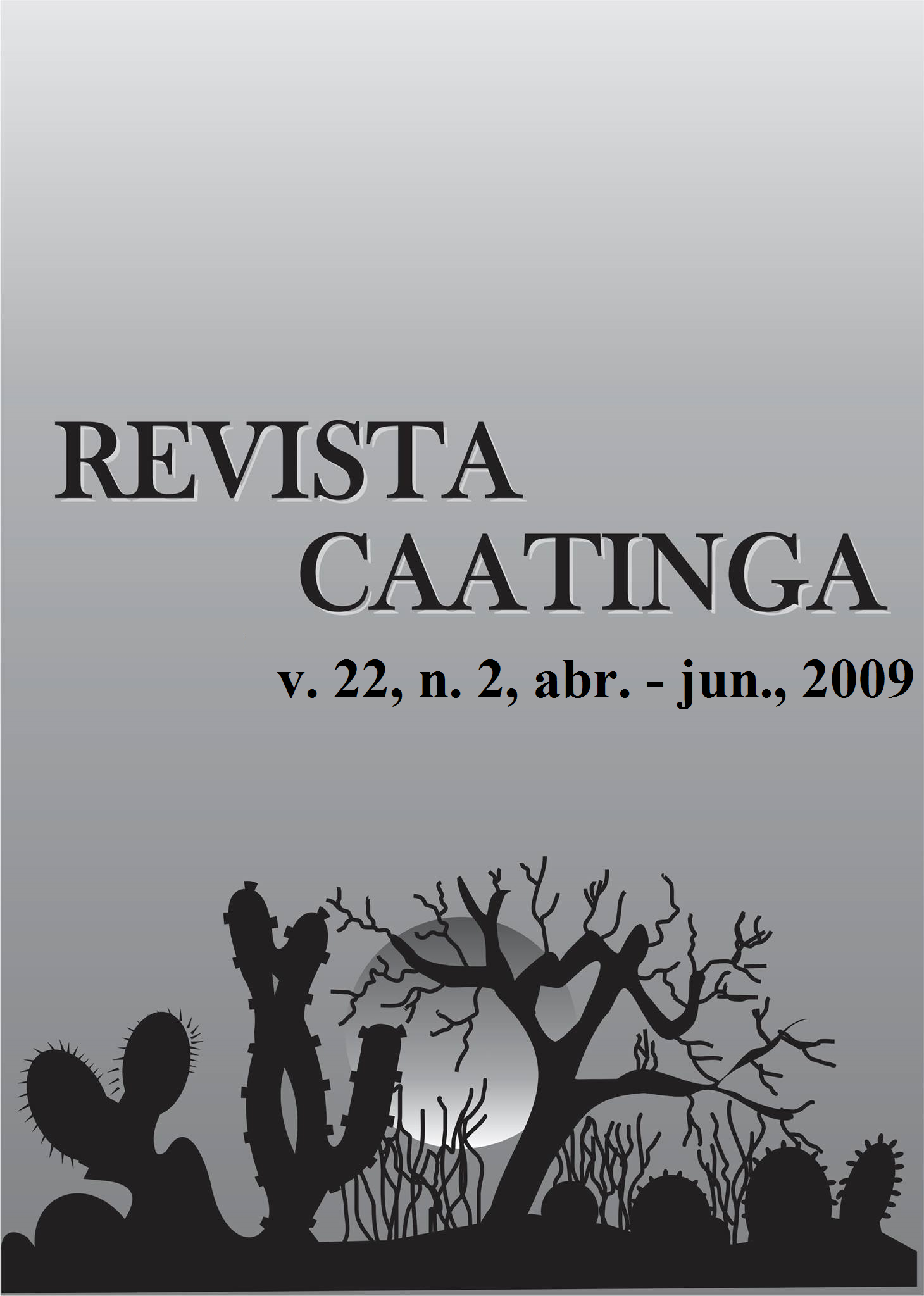SOURCES ALTERNATIVE OF ORGANIC MATTERS FOR MIX OF SUBSTRATES FOR THE PRODUCTION OF YELLOW-PASSION SEEDLINGS
Palavras-chave:
Passiflora edulis Sims f. flavicarpa Deg, goat manure, sheep manure, fertilizationResumo
Most of the time, seedlings of yellow passion fruit are produced from seeds. The success in the establishment of the culture depends on several factors, such as the use of seeds of good quality and choice of the best substrate. This work the aim, was to evaluate sources alternative of organic matter in the mixture of substrates for the production of yellow-passion (Passiflora edulis Sims f. flavicarpa Deg) seedlings. The experimental design was in blocks completely randomized, with ten treatments, with four repetitions and ten plants per parcel, been the treatments: pure soil (S), soil + goat manure (S + GM) in the proportion of 3:1, soil + sheep manure (S + SM) in the proportion of 3:1, soil + bovine manure (S + BM) in the proportion of 3:1, soil + earthworm humus (S + H) in the proportion of 3:1, soil + goat manure + sheep manure (S + GM + SM) in the proportion of 2:1:1, soil + goat manure + bovine manure (S + GM + BM) in the proportion of 2:1:1, soil + sheep manure + bovine manure (S + SM + BM) in the proportion of 2:1:1 , soil + sheep manure + bovine manure (S + SM + BM) in the proportion of 2:1:1, pure soil fertilized with single superphosphate and potassium chloride (S + P + K) at doses of 1 kg m-3 and 0.5 kg m-3 respectively and pure soil fertilized with only single superphosphate (S + P) at a dose of 1 kg m-3. The use of goat and sheep manure in mixtures of substrates provided good results in the production of Yellow-passion seedlings. Of all the tested substrates, the substrate soil + bovine manure in the proportion of 3:1 promoted the best development of the yellow-passion seedlings.Downloads
Downloads
Edição
Seção
Licença
Os Autores que publicam na Revista Caatinga concordam com os seguintes termos:
a) Os Autores mantêm os direitos autorais e concedem à revista o direito de primeira publicação, com o trabalho simultaneamente licenciado sob a Licença Creative Commons do tipo atribuição CC-BY, para todo o conteúdo do periódico, exceto onde estiver identificado, que permite o compartilhamento do trabalho com reconhecimento da autoria e publicação inicial nesta revista, sem fins comerciais.
b) Os Autores têm autorização para distribuição não-exclusiva da versão do trabalho publicada nesta revista (ex.: publicar em repositório institucional ou como capítulo de livro), com reconhecimento de autoria e publicação inicial nesta revista.
c) Os Autores têm permissão e são estimulados a publicar e distribuir seu trabalho online (ex.: em repositórios institucionais ou na sua página pessoal) a qualquer ponto antes ou durante o processo editorial, já que isso pode gerar alterações produtivas, bem como aumentar o impacto e a citação do trabalho publicado (Veja O Efeito do Acesso Livre).







